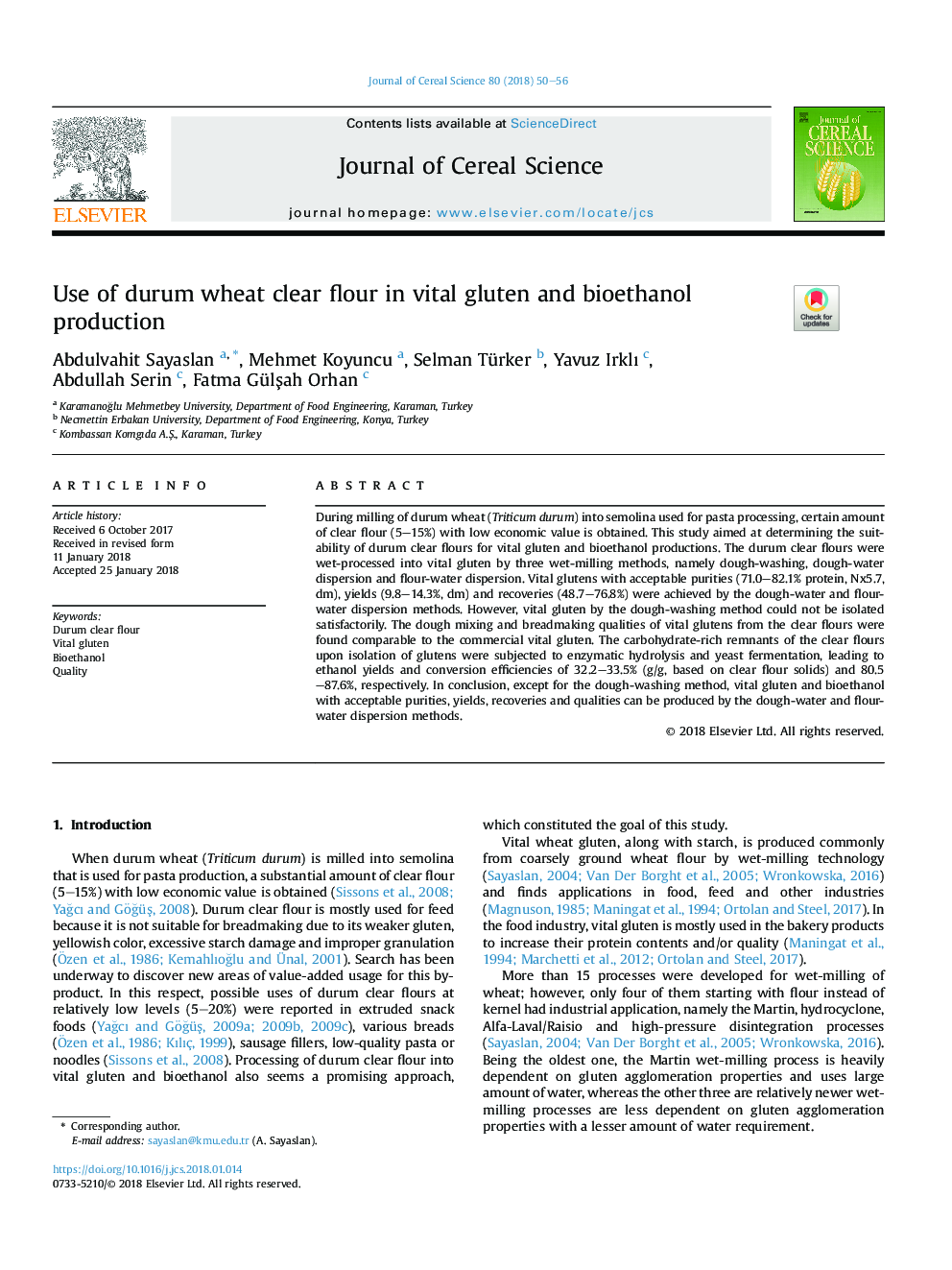| Article ID | Journal | Published Year | Pages | File Type |
|---|---|---|---|---|
| 8881363 | Journal of Cereal Science | 2018 | 7 Pages |
Abstract
During milling of durum wheat (Triticum durum) into semolina used for pasta processing, certain amount of clear flour (5-15%) with low economic value is obtained. This study aimed at determining the suitability of durum clear flours for vital gluten and bioethanol productions. The durum clear flours were wet-processed into vital gluten by three wet-milling methods, namely dough-washing, dough-water dispersion and flour-water dispersion. Vital glutens with acceptable purities (71.0-82.1% protein, Nx5.7, dm), yields (9.8-14.3%, dm) and recoveries (48.7-76.8%) were achieved by the dough-water and flour-water dispersion methods. However, vital gluten by the dough-washing method could not be isolated satisfactorily. The dough mixing and breadmaking qualities of vital glutens from the clear flours were found comparable to the commercial vital gluten. The carbohydrate-rich remnants of the clear flours upon isolation of glutens were subjected to enzymatic hydrolysis and yeast fermentation, leading to ethanol yields and conversion efficiencies of 32.2-33.5% (g/g, based on clear flour solids) and 80.5-87.6%, respectively. In conclusion, except for the dough-washing method, vital gluten and bioethanol with acceptable purities, yields, recoveries and qualities can be produced by the dough-water and flour-water dispersion methods.
Keywords
Related Topics
Life Sciences
Agricultural and Biological Sciences
Agronomy and Crop Science
Authors
Abdulvahit Sayaslan, Mehmet Koyuncu, Selman Türker, Yavuz Irklı, Abdullah Serin, Fatma GülÅah Orhan,
